The Inner Lives of Islands
Exploring the storytelling instincts of artists from across the Asia-Pacific
The exhibition The Inner Lives of Islands curated by Robbie Handcock at Te Tuhi explores the experiences, narrative structures and playfulness from artists across the Asia-Pacific. Individually and collectively the works on show, through sculptural, filmic and installation-based interventions, reflect ideas of nationhood and diasporic identities from this region. SOUTH SOUTH interviewed the curator to find out about his considerations for the show.
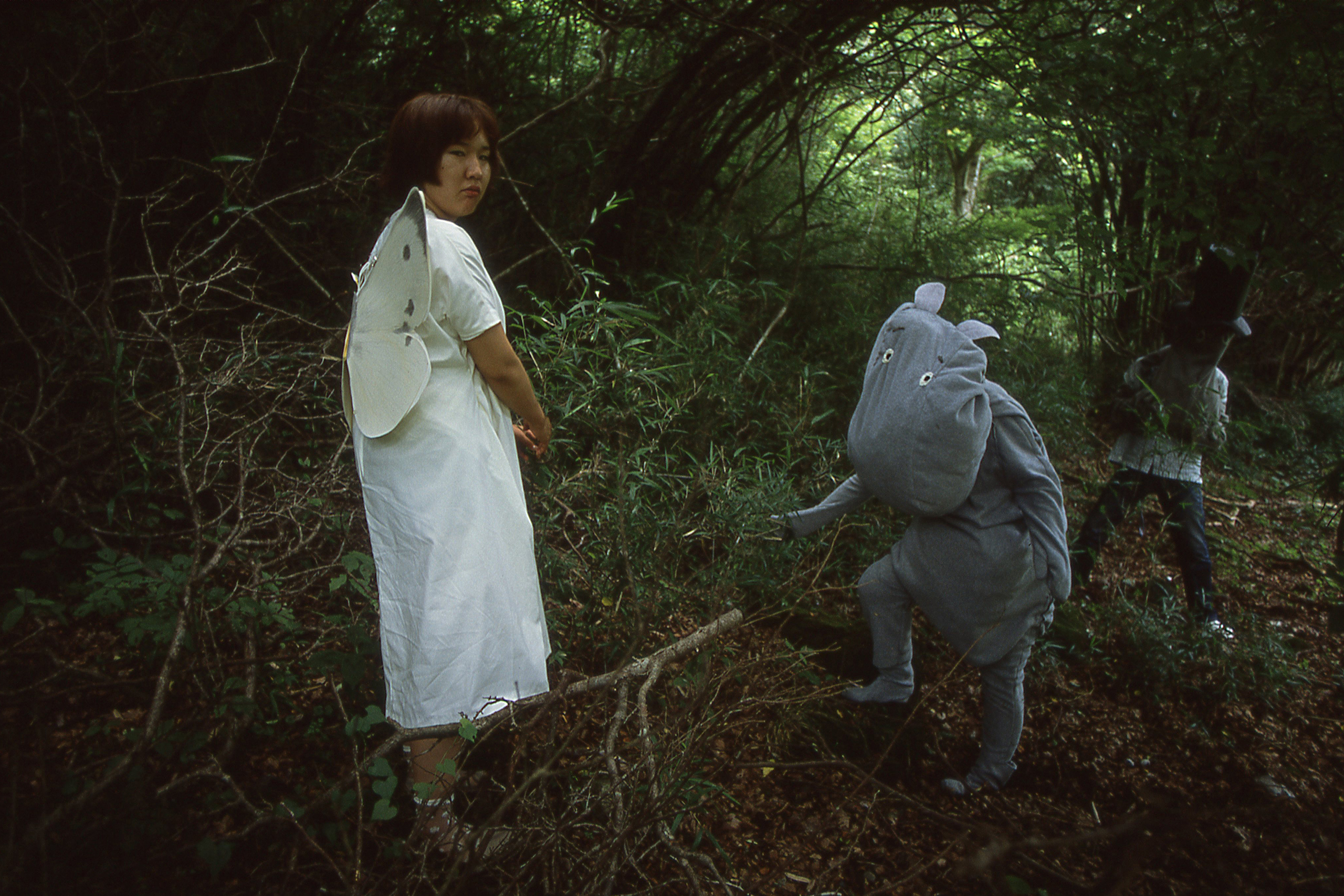
Yuki Iiyama, Moomin Family goes on a picnic to see Kannon, 2014 (still). Single-channel video, sound. 21 mins 21 secs. Courtesy of the artist & WAITINGROOM, Japan.
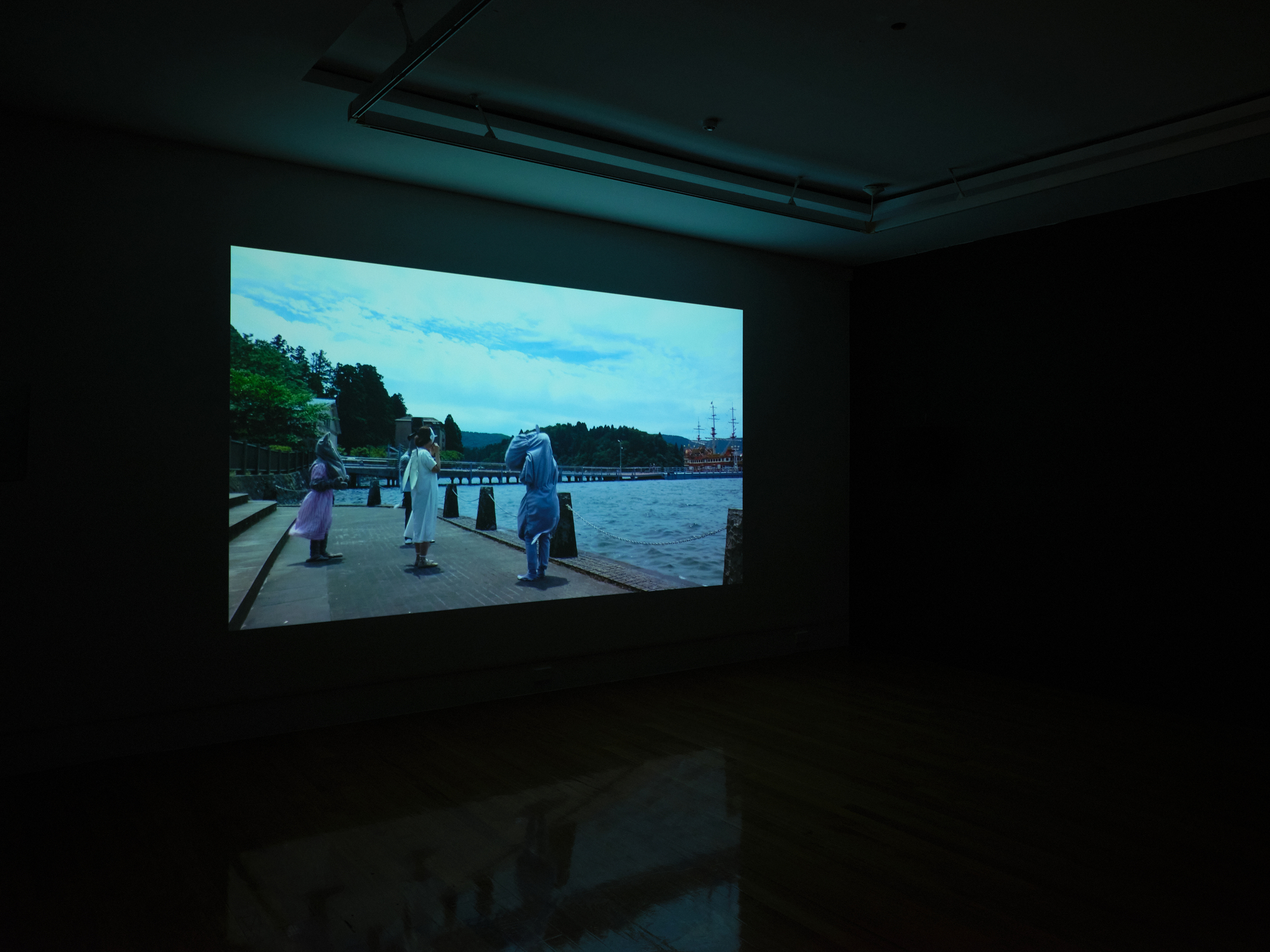
Yuki Iiyama, Moomin Family goes on a picnic to see Kannon, 2014 (installation view). Single-channel video, sound. 21 mins 21 secs. Courtesy of the artist & WAITINGROOM, Japan. Photo by Sam Hartnett.
SOUTH SOUTH (SS): Could you please share a bit about your own practice and overview of your journey within the art world?
Robbie Handcock (RH): I’ve recently moved to Tamaki Makaurau to work at Gus Fisher Gallery as their public programmes officer after spending about 12 years in Te Whanganui-a-Tara, where I went to art school. Since then, I’ve maintained a painting practice that is concerned with queer subjectivity and aesthetics and recently more focused on the relationship between sexuality and domesticity.
After art school I spent two years as a facilitator with the artist-run gallery play_station in Te Whanganui-a-Tara. The first show I worked on was Elisabeth Pointon’s WOULD YOU LOOK AT THAT., which would become the beginning of a three part series of plane-towed banners carrying the words and phrases “spectacular”, “big deal”, and “outstanding”. This came out of a conversation at our flat at the time, asking the question: what work would you make if money were no issue. These works were executed with extremely limited resources, but definitely had the energy of artists pooling together to get something off the ground. It was largely my time with play_station that allowed me to explore working with artists from a curatorial perspective and how much I enjoyed being part of a team helping realise ambitious projects. Since then I’ve definitely sought out opportunities and experiences that recreate that sense of achievement of having made something significant from unlikely beginnings.
SS: What are important curatorial considerations for your practice? How are these present in your curatorial interventions in The Inner Lives of Islands?
RH: Just pragmatically, I really aim to centre the artist. For me, this includes making sure that the work of artists is appropriately compensated or that it’s a mutually beneficial labour exchange. Looking through the projects I’ve been involved with or artist friends and colleagues whose practices I enjoy, I think I’m drawn to work that explores lived experience through equal parts humour and drama. I love an audacious statement, a power move, but I also love something tongue-in-cheek or even straight-up snarky. I think with The Inner Lives of Islands, this has been my attempt at making something poetic and even whimsical, but the drama has definitely come through. With so many of the artists in this show exploring genealogy in one way or another, drama in this exhibition can feel appropriate when thinking about some of our own familial relationships.
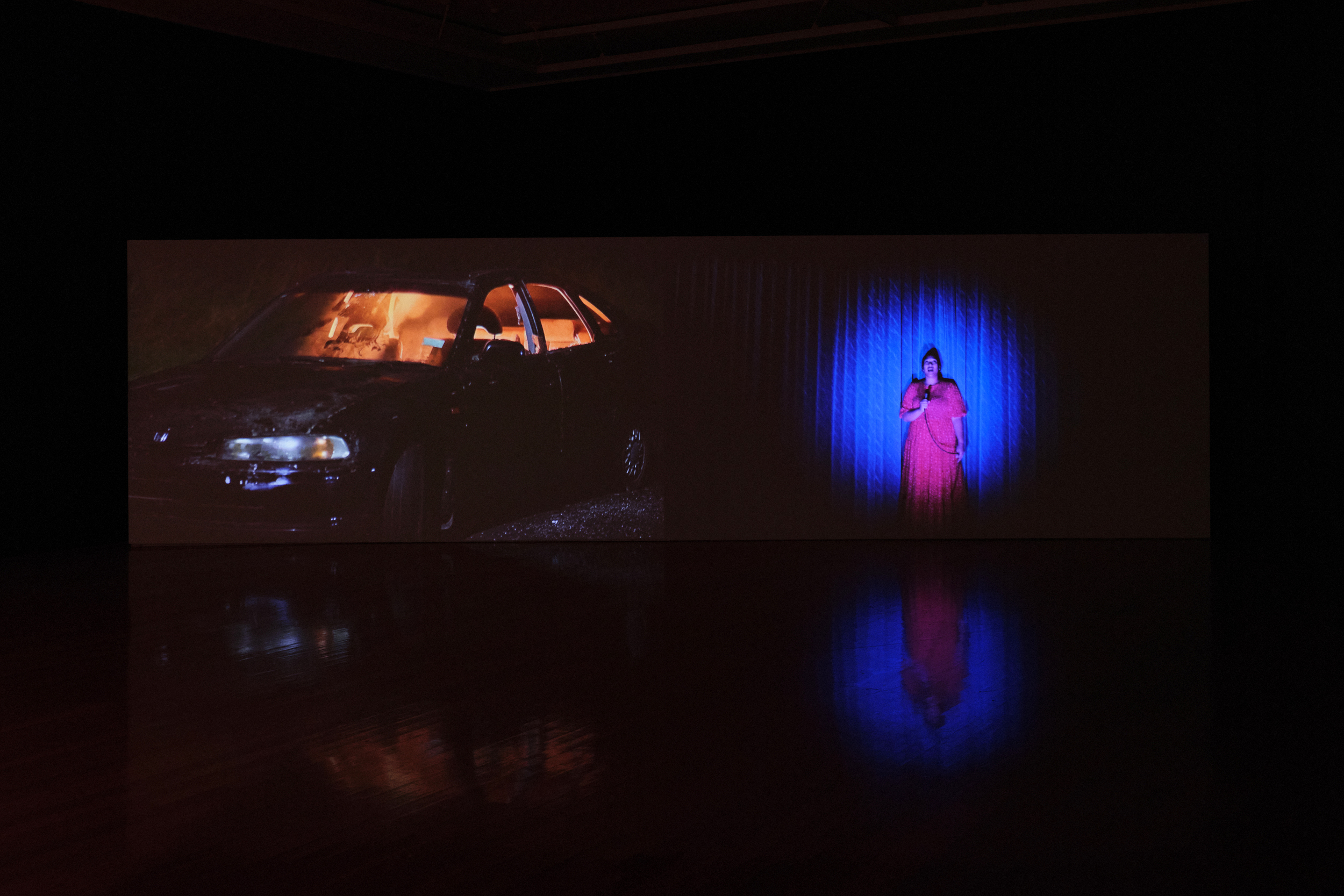
Christopher Ulutupu, What’s the worst you could do?, 2021 (installation view). Two-channel HD video, sound. 10 mins 48 secs. Cinematography by Haz Forrester. Sound & camera assist by Kane Laing. Commissioned by Te Tuhi, Aotearoa New Zealand. Photo by Sam Hartnett.
I love an audacious statement,
a power move,
but I also love something tongue-in-cheek
or even straight-up snarky.
SS: The show explores storytelling instincts from artists from across the Asia-Pacific and how these might reflect ideas of nationhood and diasporic identities from this region. Could you share more about the thematic explorations present in the show?
RH: The initial prompt for the exhibition was from a very particular cultural exchange between the Philippines and Samoa. Anecdotally, through various friends and family, I’d found out that Filipino soap operas were very popular in Samoa and I wanted to explore what kind of shared cultural values were present that allowed for such an exchange. There’s a convergent sort of history that exists between the two countries, a kind of Venn diagram of colonisation, religion, economic and militaristic relationships with their neighbouring nations and foreign powers further overseas. It was in expanding this train of thought largely to how smaller nations in the Asia-Pacific have had similar experiences and relationships, and how individuals from these nations processed that, that the exhibition in its current composition came to be.
The artists in this show all deal with a duality between locality and foreignness, with diasporic identities through a personal lens, and some use foreign story-telling mechanisms to do so. Quite often they are touching on political ideas that are buffered and interpreted through a personal recounting of a story. In some cases it’s like a bait-and-switch, whereas with an audience you’re geared up for one kind of experience and you’re delivered with something totally different. The artists here play with tropes and expectations really skillfully this way.
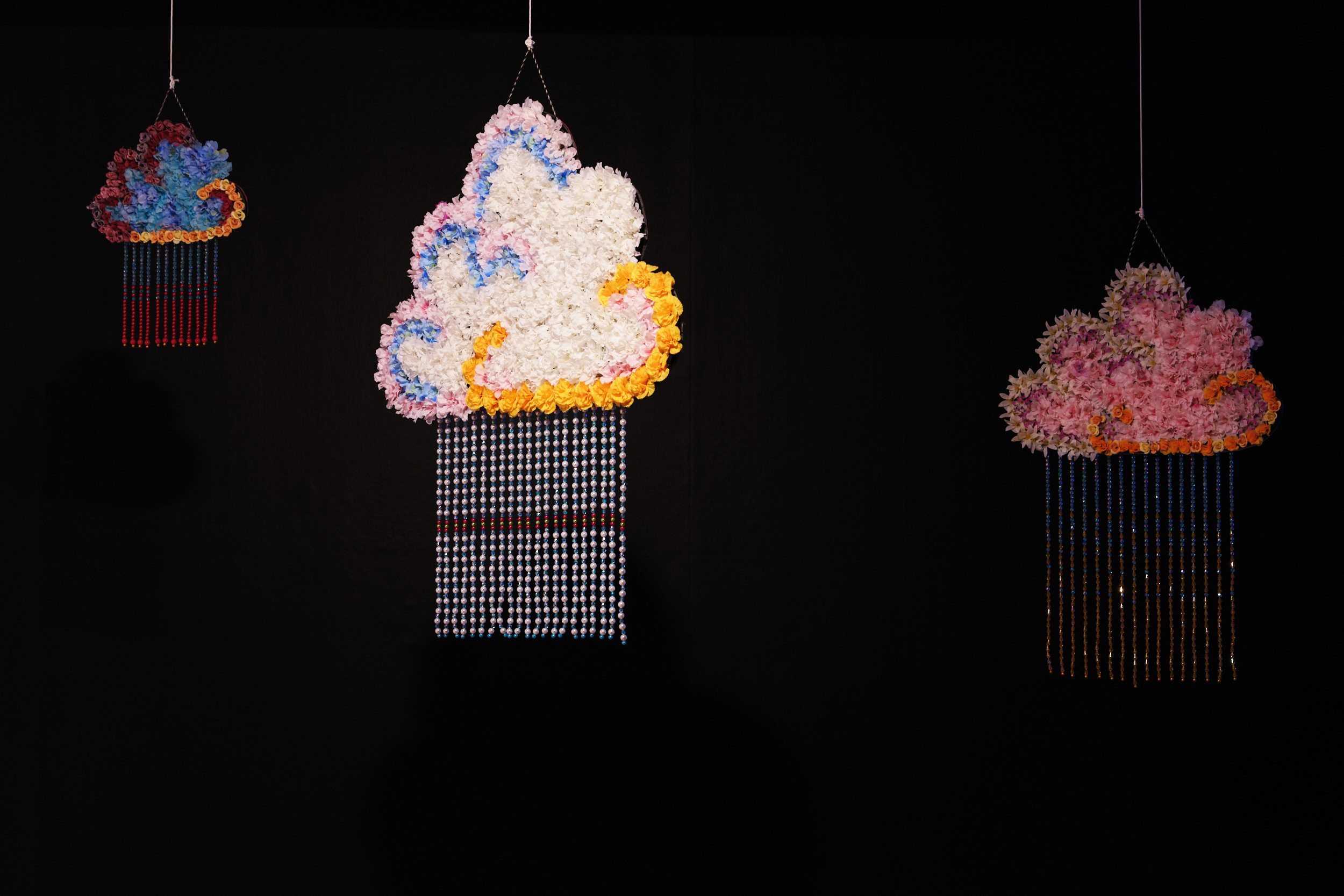
Sione Tuívailala Monū, ‘Ao kakala, 2021 (installation view). Plastic flowers, foam board, beads. Commissioned by Te Tuhi, Aotearoa New Zealand. Photo by Sam Hartnett.
SS: Could you share more about the artists and artwork present in the show? Are there particular works that become anchors or guides in unpacking the thematic threads of the show?
RH: The artists in the show hail from and live in different parts from across the Asia-Pacific. Shireen Seno is Tokyo-born and Philippines-based and Yuki Iiyama is from Japan. Christopher Ulutupu, Emerita Baik and Sione Monū all live in Aotearoa whose backgrounds are Samoan, Korean and Tongan respectively. All their practices speak directly to experiences of coming from and moving between these places. It’s a pretty film-heavy exhibition, with Shireen showing a Filipino-Spaghetti Western titled Shotgun Tuding (2014) that plays with the idea of genre and Yuki’s work Moomin Family goes on a picnic to see Kannon (2014) details her sister’s mental health experience and her hallucinations that manifest themselves through the Finnish/Swedish comics the Moomins. These two works really investigate foreign story-telling conventions, while Chris has taken standard filmic narrative tools and pared them right back. His work What’s the worst you could do? (2021) revisits a script he wrote in 2012 while working in film and theatre and removes completely the dialogue and most of the plot develops, leaving behind only atmosphere, character and score.
The sculptures in this exhibition from Emerita and Sione offer a still counterpart to the moving-image works. Both these artists refer to traditional practises, reframed using contemporary materials. Emerita’s circular sculptures reference the Korean tradition of bottari, a method of bundling possessions to store, protect, gift and move from place to place. Through physical making, Emerita makes solid the indescribable experience of living between cultures. Sione has made whimsical clouds using beading and plastic flowers, borne out of nimamea’a tuikakala, the Tongan fine art of flower designing. Both these works offer a meditative reflection on genealogy and tradition.
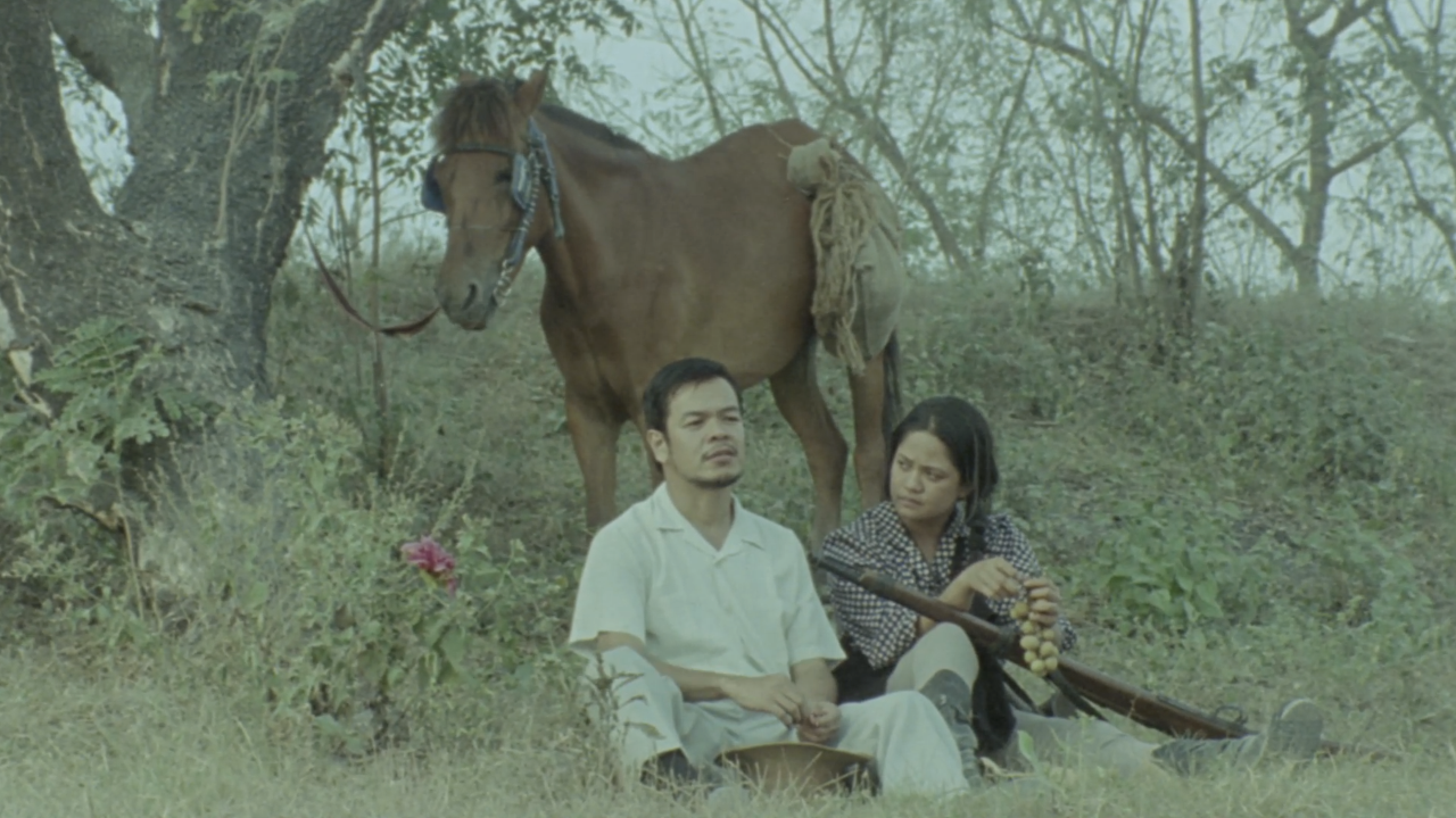
Shireen Seno, Shotgun Tuding, 2014 (still). Single-channel video, sound. 15 mins 57 secs. Courtesy of the artist.
SS: Are there any other points of significance you would like to share with our readers?
RH: Te Tuhi brought me in to deliver part of their winter exhibition programme. This was a great opportunity provided through the gallery’s independent curator initiative. Showing at the same time as The Inner Lives of Islands is They covered the house in stories curated by another independent curator, Amy Weng. There is a fun dynamic and interesting overlap between the two shows that seems to have happened by chance, but importantly I think it is an example of the great work that can come out of giving emerging practitioners the right resources.
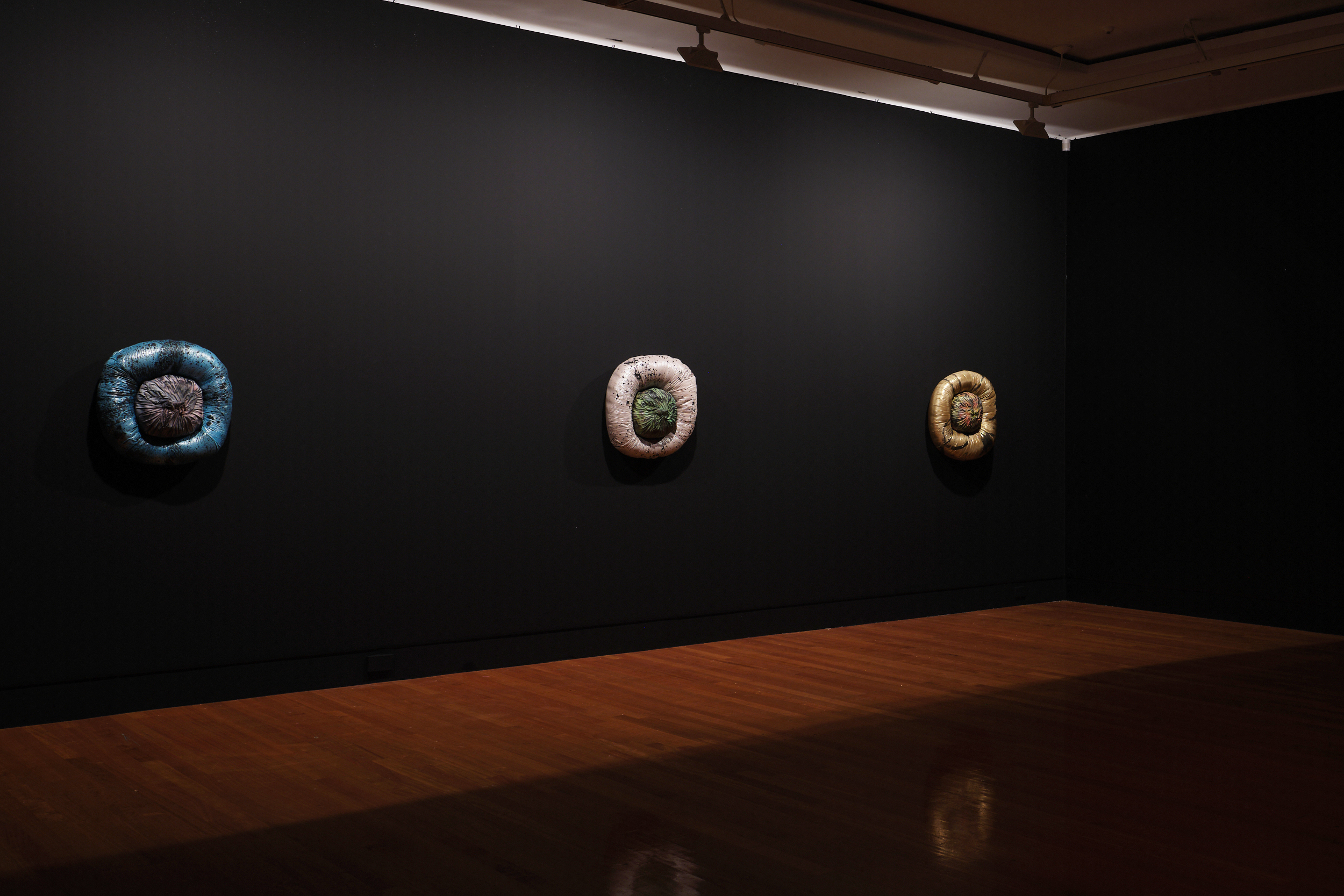
Left to right:
Emerita Baik, Nose of a pig, 2021 (installation view). Polyurethane, metal powder, cotton, polystyrene, acrylic paint. Commissioned by Te Tuhi, Aotearoa New Zealand. Photo by Sam Hartnett.
Emerita Baik, Head of a camel, 2021 (installation view). Polyurethane, metal powder, silk, polystyrene, acrylic paint. Commissioned by Te Tuhi, Aotearoa New Zealand. Photo by Sam Hartnett.
Emerita Baik, Eyes of a rabbit, 2021 (installation view). Polyurethane, metal powder, cotton, polystyrene, acrylic paint. Commissioned by Te Tuhi, Aotearoa New Zealand. Photo by Sam Hartnett.
